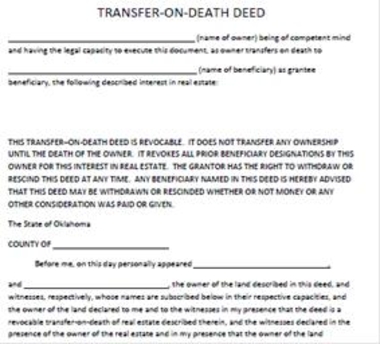Property ownership: which method is best for you?

Property ownership is a complicated issue, and can be made more difficult when the owner dies, or wants to share their property with their partner. There are several forms of ownership, but one of the most common is called ‘Joint Tenancy.’
Joint tenancy ownership of property means when one owner dies, full ownership of the property passes easily to the other owner. This is called the ‘right of survivorship.’ When the first of the joint tenants dies, the ‘survivor’ becomes the owner of the property. It’s easy and inexpensive and avoids probate for the property. (Note that there may be other assets in the estate that will need to be probated unless the owner had a trust.)
To set up joint tenancy, the owner simply deeds the property to himself and the other person in ‘joint tenancy with right of survivorship.’ When the first of them passes away, the survivor submits an affidavit and death certificate to the County Clerk and the transfer of ownership to the survivor occurs automatically.
Joint tenancy is often used by an aging parent to transfer ownership to a child. It allows the parent to retain ownership for life. When the parent dies, the child takes immediate ownership. Another common use of joint tenancy is where one member of a couple owns a house and wants to create joint ownership with the other. The joint tenancy approach is easy, but there are tax implications.
The most important consequence is the capital gains tax. In the scenario where the parent has owned the house for a long time and makes his or her child a joint tenant, the child will owe tax on the increase in value between the amount the parent paid and the amount the child sells the property for. So if mom paid $25,000 for the house in 1965 and the child sells it for $125,000, tax is due on the $100,000.
This is why I recommend that people consider an alternative, called a Transfer-on-Death Deed (TOD). The TOD is created like a joint tenancy. The owner executes a deed in favor of the beneficiary and files it with the County Clerk. The owner can change or cancel the deed at any time. When the owner passes away, the beneficiary submits an affidavit and a death certificate and becomes the owner of the property. The capital gains tax is levied only against any increase in value between the time of the first owner’s death and the date the beneficiary sells the property.
Another problem with joint tenancies is that the owner is considered to have made a gift of one-half of the value of the property when the joint tenancy is created. If the person becoming a joint tenant is paying for his or her share of the ownership, the contribution needs to be documented to show that the transaction was not a gift. There also may be a documentary tax fee associated with the transfer if money changes hands.
If the creation of the joint tenancy is, in fact, a gift, a federal gift tax return will need to be filed unless the value of the gift is $14,000 or less. (There is currently no Oklahoma gift tax.) Of course, most homes are worth more than $28,000. Fortunately, there is usually no tax due because, in addition to the $14,000 per-person, per-year exemption, everyone has a lifetime gift/estate tax credit of $5.25 million.
But there is a fine for failing to file the return. In the last couple of years, the IRS has stepped up its efforts to enforce the gift tax rules. Again, a Transfer-on-Death Deed may be a better alternative because there is no gift until the owner passes away and thus no return is due.
As noted above, property ownership, and the transfer of ownership, are complicated issues. So, I recommend if you are considering transferring property into joint tenancy, that you first consult your attorney or CPA about these implications.
by Sally Gilbert, Legal columnist
The Gayly – January 19, 2014 @ 2:10pm





